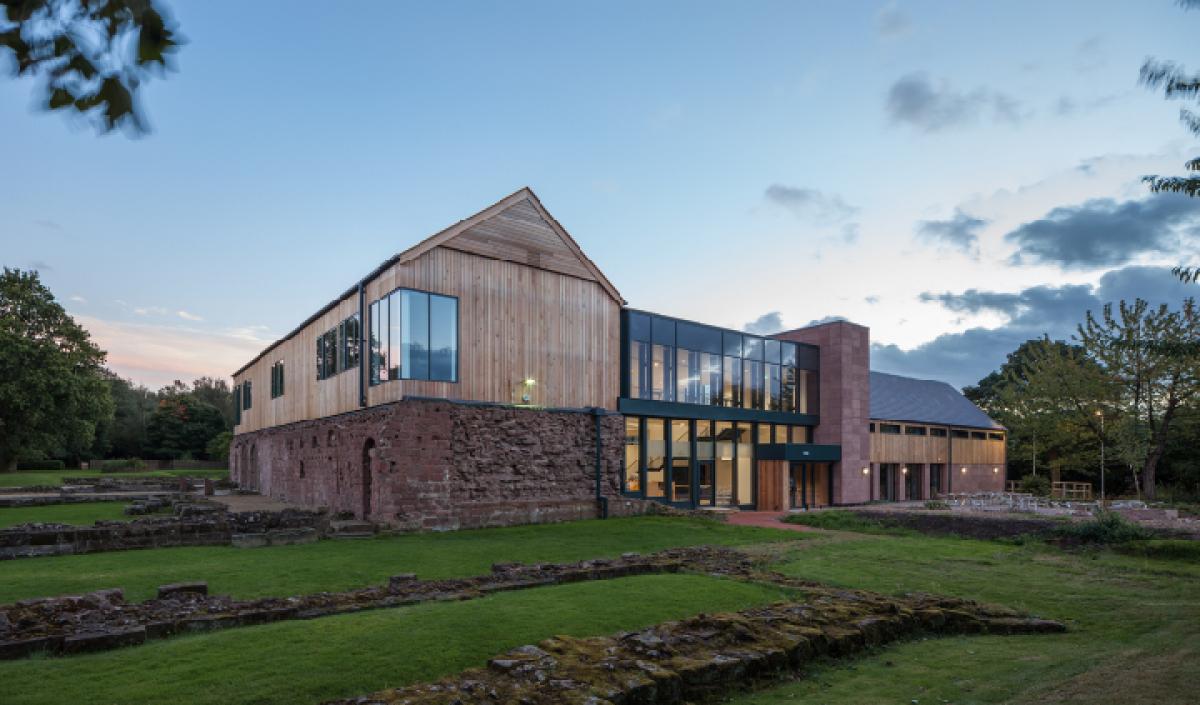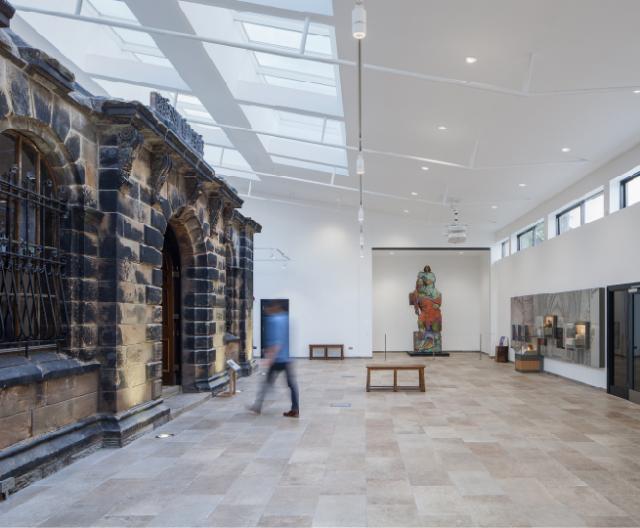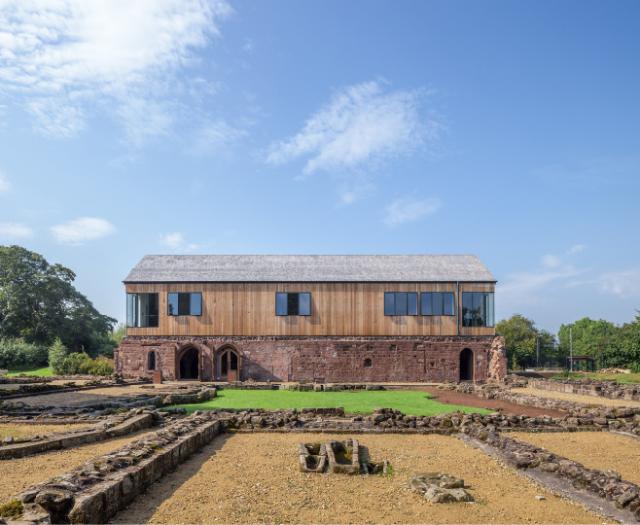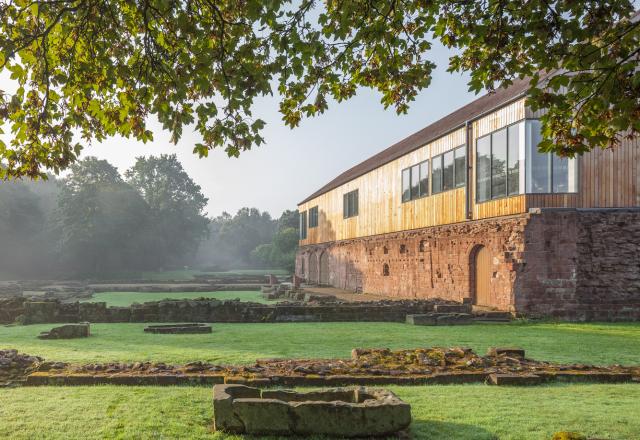
One year on from the redevelopment of Norton Priory Museum and Garden, we revisited the museum and spoke to Director, Frank Hargrave, to see how the museum has fared.
The Heritage Lottery Fund ‘Monastery to Museum 900’ project involved the demolition of an outdated museum building and the creation of a new museum structure on the historic site.
The redesigned building contains gallery space across two floors, and a central atrium which integrates the entrance to the undercroft; the only part original medieval priory still standing. An increase in the museum’s footprint allowed exhibition space to increase by 60% enabling the museum to display its full collection for the first time. New café and education spaces were also created to extend the museum’s capacity for events and visiting school groups.
In the year prior to the redevelopment, around 34,000 people visited Norton Priory. Just one month after re-opening, an incredible 10,000 people had passed through the doors. As the project passes the 12-month milestone, it is celebrating welcoming more than 60,500 visitors, far surpassing the target of 55,000 initially agreed with the HLF. Commenting on the figures Frank said:
"Visitor reception has been really pleasing. What’s been great is that even six, twelve months on, high visitor numbers have carried straight through. It’s been high and it’s stayed high. By now, I’d expect it to start dropping off, but it just hasn’t happened…
“…We’re also not getting the quiet days we used to. Back in the day, when we didn’t have family activities on, we’d have some desperately quiet days but that’s just not happening anymore. People are coming in from a little further and staying longer which is keeping the numbers consistent.”


The draw of the new museum hasn’t just seen visitor numbers soar. Fundamentally, the new building has altered perceptions of the museum, and created an environment that has elevated, in visitors’ eyes, the status of its collection. Frank references a 14th century statue of St Christopher that was relocated to take centre stage within the new atrium:
“The St Christopher statue is such an important piece for the museum, and is one of the most significant surviving sculpture from its time.
“In the old museum, however, people would enter and would assume that you wouldn’t put anything important in there. No matter what you told them, they wouldn’t really take you seriously. Whereas now, you tell them something’s important and they believe it. It’s helped with public reception massively.”
He adds that the new museum has also helped the site “become part cultural conversations about how Norton Priory can contribute to the area’s wider tourism and investment offer.”


Since reopening, museum partner, Halton Borough Council, has increasingly drawn on Norton Priory as a cultural symbol for the area, highlighting it to investors as an example of the area’s heritage, its attractiveness and to change people’s perspectives of Runcorn; using the new development as an opportunity to influence economic policy for the wider Merseyside region that has previously been city-centric. Also of benefit has been the influx of day-trippers. One year on, more than 60% of visitors surveyed have travelled from outside the region with associated benefit to the Halton region.
Frank finishes by saying: “As far as the positives go, there have been loads. The whole thing has been better than I had ever imagined.”
